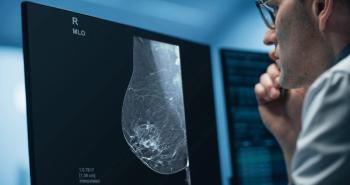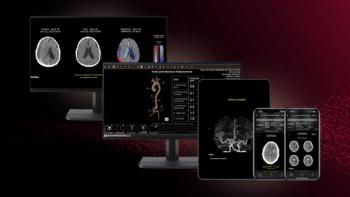
Portable abdominal CT goes to ICU patients
Intensive care unit patients cannot benefit from abdominal CT until they become stable or fit for transport. Portable CT scanners deployed at the bedside, however, may provide valuable diagnostic information and reduce transportation risks.
ntensive care unit patients cannot benefit from abdominal CT until they become stable or fit for transport. Portable CT scanners deployed at the bedside, however, may provide valuable diagnostic information and reduce transportation risks.
Dr. Michael M. Maher and colleagues at Massachusetts General Hospital have found that the portable scanners can obtain important diagnostic information about the abdomen without moving patients out of the ICU (AJR 2004;183:663-670). The images cannot compete in quality with those produced by conventional scanners, however.
The study did not compare portable CT with other bedside imaging techniques. Most institutions consider ultrasound more readily available and less cumbersome. Ultrasound provides valuable insight in the liver, gallbladder, kidneys, pleural space, and some of the abdominal vascular compartments. Its ability to provide diagnostic-quality images of the abdomen and pelvis in ICU patients, however, is compromised by bowel obstruction and the presence of dressings and monitoring devices.
In addition, many of the conditions that necessitate diagnostic imaging in ICU patients are not well imaged by ultrasound, including interloop abscess and hemorrhage. Portable CT is effective in the diagnosis of these conditions.
Maher and colleagues retrospectively reviewed 122 single-slice spiral portable abdominal CT scans and 41 single- and four-slice spiral stationary CT scans. Although intravenous contrast improved portable CT scanning, its quality scores were consistently lower than those for stationary CT, both with and without contrast. Findings on portable CT, however, confirmed 33 conditions suspected before scanning, detected evidence of infection in 18 patients and hemorrhage in 16, and led to seven laparotomies and six percutaneous drainage procedures. Portable CT influenced a change in patient management in 33 cases, and surgery or autopsy results confirmed portable CT findings in 12 of 17 cases.
Dr. Ulf Teichgraber and colleagues at Humboldt University in Berlin, Germany, reported on 14 portable CT chest exams of 10 ICU patients (Intensive Care Med 2003;29[3]: 491-495). Eight examinations resulted in a change in patient management within 48 hours. Seven patients were scanned in a special interventional suite in the ICU, which allowed immediate minimally invasive therapeutic interventions and provided full ICU monitoring.
Taking patients out of the ICU and into the radiology department can be disruptive and takes time away from radiology's already busy schedule, said David Martino, an executive for Schaerer Mayfield USA, a portable CT vendor. Portable CT scanning improves patient safety and cost management for the entire hospital, he said.
Newsletter
Stay at the forefront of radiology with the Diagnostic Imaging newsletter, delivering the latest news, clinical insights, and imaging advancements for today’s radiologists.




























